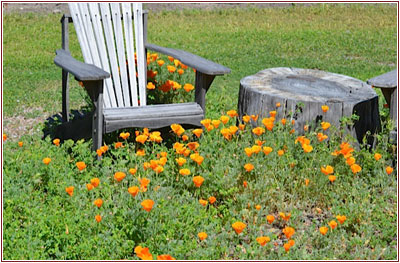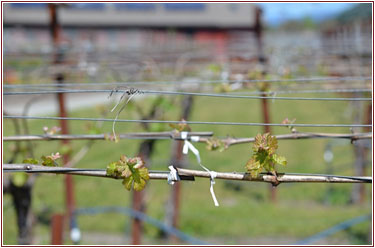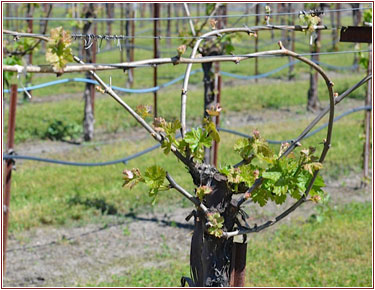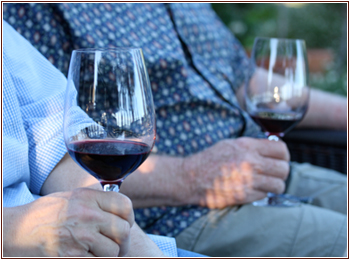
Tom Scott Vineyard Newsletter - May 2015 - Barn Burner Cabernet Sauvignon

 Our 2015 Cabernet Sauvignon vintage is well under way! Our pruning was concluded in record time, altogether in just four weeks. In large part this was due to the beautiful weather we experienced in February and March. As is our practice, we pruned our first vine on February 14th, our own personal Valentine! But this year travel commitments and health issues delayed us. Luckily, the weather was our ally, and once we got going we were able to finish ahead of bud break. Our 2015 Cabernet Sauvignon vintage is well under way! Our pruning was concluded in record time, altogether in just four weeks. In large part this was due to the beautiful weather we experienced in February and March. As is our practice, we pruned our first vine on February 14th, our own personal Valentine! But this year travel commitments and health issues delayed us. Luckily, the weather was our ally, and once we got going we were able to finish ahead of bud break.
Each year offers its own unique challenges and each year we try to simplify and improve the way we work. This year we again brought in a two-man crew to remove the cut canes from the field, and for the first time we worked with our crew to tie down our fruiting canes. With the old adage "delegate or die" resounding in our ears, we have brought in help where we can. We will always prune the vines ourselves, as we believe our pruning style is both critical and unique, and results in the highest quality fruit. And the highest quality fruit is what gives us Barn Burner!
 The driving philosophy behind our vineyard is balance. Vine balance is obtained through the complex interaction of soil, climate, rootstock capacity, scion capacity, vine density, trellis system, shoot density and cultural practices. The first six factors were chosen or determined at the time of building and planting back in 1999 and 2000. Our soil here at TSV is sandy loam and alluvial. It is rich in nutrients and minerals, and is highly fertile, a good environment for vigorous plant growth. We have a Mediterranean climate, characterized by warm to hot, dry summers and mild to cool, wet winters. All wine grapes are a combination rootstock and scion (varietal i.e. Cabernet Sauvignon). Our rootstock is St. George, which has a long history in California. It seems to avoid drought because it has a deep, extensive root system and is a high vigor rootstock. Vine density and our trellis system were also determined at the time the infrastructure was put in place in 1999. It was decided our vines would be spaced five feet apart, with the vine rows set at nine feet. The trellis system is a modified open lyre. All of these decisions were made with the idea of producing a high quality Cabernet Sauvignon. The driving philosophy behind our vineyard is balance. Vine balance is obtained through the complex interaction of soil, climate, rootstock capacity, scion capacity, vine density, trellis system, shoot density and cultural practices. The first six factors were chosen or determined at the time of building and planting back in 1999 and 2000. Our soil here at TSV is sandy loam and alluvial. It is rich in nutrients and minerals, and is highly fertile, a good environment for vigorous plant growth. We have a Mediterranean climate, characterized by warm to hot, dry summers and mild to cool, wet winters. All wine grapes are a combination rootstock and scion (varietal i.e. Cabernet Sauvignon). Our rootstock is St. George, which has a long history in California. It seems to avoid drought because it has a deep, extensive root system and is a high vigor rootstock. Vine density and our trellis system were also determined at the time the infrastructure was put in place in 1999. It was decided our vines would be spaced five feet apart, with the vine rows set at nine feet. The trellis system is a modified open lyre. All of these decisions were made with the idea of producing a high quality Cabernet Sauvignon.
 Once the first six factors were chosen, they couldn't be easily changed, but shoot density and our farming (cultural) practices are variables we can control, and that can be changed by us throughout the growing season. Early on, we decided to end tilling our vineyard and mow instead, a change in a basic farming practice. A permanent ground cover crop between vine rows helps control erosion and minimizes compaction. We chose a pruning method, head-trained/cane-pruned, which allows us maximum control of each vine, a critical component in vine balance. Our farming choices determine when we prune (always late) as well as when we harvest (always late). The choice of pruning and harvest dates allows us to best utilize the local weather patterns, positioning our vines and fruit for the most favorable conditions. Once the first six factors were chosen, they couldn't be easily changed, but shoot density and our farming (cultural) practices are variables we can control, and that can be changed by us throughout the growing season. Early on, we decided to end tilling our vineyard and mow instead, a change in a basic farming practice. A permanent ground cover crop between vine rows helps control erosion and minimizes compaction. We chose a pruning method, head-trained/cane-pruned, which allows us maximum control of each vine, a critical component in vine balance. Our farming choices determine when we prune (always late) as well as when we harvest (always late). The choice of pruning and harvest dates allows us to best utilize the local weather patterns, positioning our vines and fruit for the most favorable conditions.
Our vineyard is the result of early, thoughtful choices and ongoing attention to detail. The balance that results in the field is evident in the wine. Barn Burner is a direct reflection of a complex interaction between nature and man. We are proud of our part in producing such a big, beautiful, full-bodied wine. We truly feel each year's wine is a reflection of that year's dance, a dance where we are partnered with nature to give you our best. Barn Burner Cabernet Sauvignon!
Warmest regards,

Tom and Lauren Scott
www.tomscottvineyard.com
www.tomscottvineyard.com/wineshop
info@tomscottvineyard.com
Back-issues of our Notes

|



